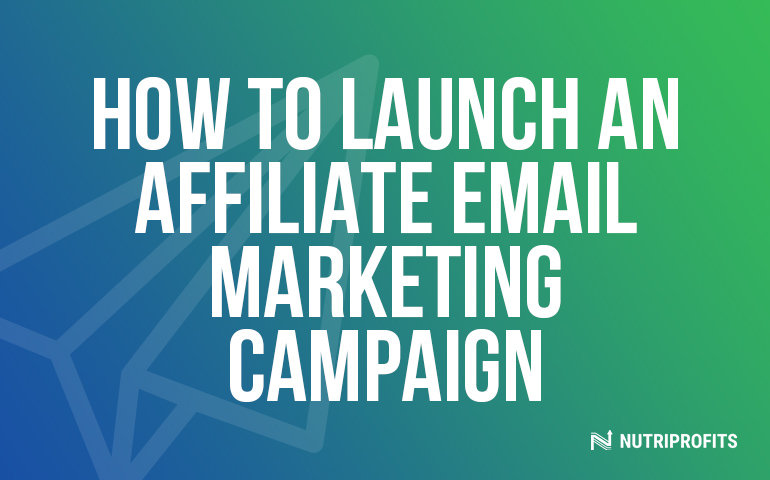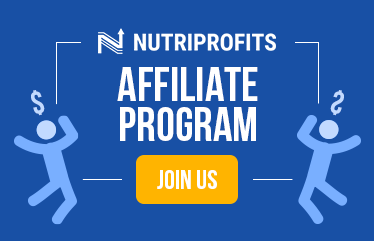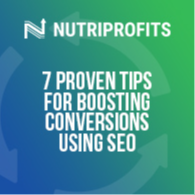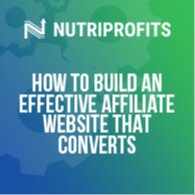There are many ways for an affiliate marketer to market their products and services towards their consumers. For example, social media is becoming a popular method of promoting products and services.
In cases where there are some consumers who don’t use social media, however, an email marketing campaign is an excellent method. So, how does one launch an affiliate email marketing campaign?
To succeed, affiliate marketers must know what email marketing is and how to launch an effective one.
Why is Email Marketing Worth a Try?
For those who don’t know, email marketing is a strategy where one sends emails to current or potential consumers. Businesses and affiliate marketers use this strategy to drive engagement, increase brand awareness, make sales, and nurture leads.
In 2022, email marketing’s average ROI (return on investment) was $36 for every dollar spent. In the Chief Marketer B2B Marketing Outlook Survey in 2020, email produced the highest ROI in their B2B leads with 50%. When considering the over four billion email users worldwide, that’s a lot of business that affiliate marketers shouldn’t ignore!
There are many types of email marketing campaigns affiliate marketers can try because they can promote their products in various ways.
For starters, the welcome email is the first email any consumer receives after signing up to an email list or buying something. Welcome emails are effective because they have an average open rate of 50%.
Another email campaign, and one of the most popular, is the newsletter email. Newsletters are non-promotional, so affiliate marketers can use this type to update their consumers and share news, tips, tricks, and more.
There’s also the promotional email. Promotional email campaigns have many forms, but their main purpose is to promote a particular product, service, or current sale.
And anyone who has used online shopping will likely have run into an abandoned cart email. That is, if a consumer visits an affiliate marketer’s website and puts something in their cart without buying anything, the affiliate marketer can send a cart abandonment email to remind them to finish their purchase.
And in certain times, like a holiday or season, businesses and affiliate marketers send a seasonal marketing campaign. Affiliate marketers can send these campaigns during major holidays, like Halloween or Christmas.
But regardless of which email campaign is being used, the benefits are incredible. This applies not only to the business itself, but to affiliate marketers, as well.
If consumers are interested in what the affiliate marketer has in their email campaign, they’ll stay engaged and check out the marketer’s website. In turn, this will generate website traffic and boost other marketing channels, like social media, landing pages, and blogs.
Moreover, email marketing campaigns will give affiliate marketers valuable business data about their consumers and learn more about their behaviors. Affiliate marketers can do this by sending email surveys or through tracking analytics.
How to Build an Email List
With the definition of email marketing and its benefits in mind, it’s time to learn how to build an email list.
The first and perhaps most obvious step is to build a list. How else are affiliate marketers going to send emails? Marketers should pick their preferred email marketing software and go through the next steps when building their lists.
Affiliate marketers can build an email list based on age and gender, or they can build one based in a certain region or state. They can add sign-up forms to their websites, drive sign-ups through social media, or use a sign-up sheet.
One easy strategy affiliate marketers can use is placing opt-in forms in various places on their websites and emails. Marketers can create subscribe or sign-up buttons or opt-in forms with their preferred email marketing software. Then, they can embed them on their sites.
Here are some places affiliate marketers should include their forms:
- Blog feed or blog sidebar
- Home page
- Landing page
- Pop-ups on websites
- Website footer
One of the most effective ways to build an email list is to create content requiring an email address for access. Affiliate marketers can use original research and reports as lead magnets. Other ideas for lead magnets can be:
- Checklists
- EBooks
- Templates
- White paper
- More
The content can be free, but it must be gated. Consumers must give their names, emails, or other necessary information affiliate marketers need to nurture their leads.
How to Launch an Affiliate Email Marketing Campaign
And now, with email marketing as a whole covered, as well as how to create email lists, it’s time to get started. Here’s how to launch an affiliate email marketing campaign.
The first step for an affiliate marketer is to know their goals and target audience. What are they passionate about, and what kind of audience would find their niche engaging?
Each consumer has unique needs that should be addressed because there’s no one-size-fits-all solution for all consumers. That’s why affiliate marketers should segment consumer demographics for each campaign to get the best results.
The next step is personalization. A successful campaign must have an appealing design. Affiliate marketers can design their emails by adding images, white space, and their branding. Alignments and font sizes are also crucial for a great design.
Affiliate marketers can also make their email responsive on desktops and mobile devices by not using large images that don’t load properly.
Since each consumer is unique, it also helps to have email subject lines and content personalized for them. In one study, sending personalized emails increased open rates by 22.28% and click-through rates by 3.32%.

Affiliate marketers can personalize emails by mentioning their subscriber’s name in the subject line, use their location to promote nearby events or sales, or send tailored products based on previous purchases.
Sometimes, one email isn’t enough to grab a consumer’s attention, so it’s best to follow up with more emails. Affiliate marketers can do this via reminding consumers that they still have something in their carts or saying their carts will expire soon.
The most crucial part of launching a successful email marketing campaign is to be authentic. Consumers can see through a phony. No one wants to respond to an email with the address of “no-reply@somebusiness.com.”
Instead, affiliate marketers should use their names and respond to consumers. That way, they can build relationships, and the consumers will feel validated.
Best Practices in Affiliate Email Marketing
After completing, or at the very least keeping in mind, the steps mentioned above,, the first thing affiliate marketers should do in their emails is to write interesting subject lines. Subject lines should be short, and most importantly, be relevant. Nobody likes an email that drags on. In fact, consumers discard 47% of emails with lousy subject lines.
Affiliate marketers should also test their emails to best optimize them. Marketers can send one to themself first to see how it appears in their inbox. They can also leverage A/B testing to their consumers to see which version works best.
The most important practice is to add a CTA (call-to-action) in every email. CTA buttons should be visible, and the content should not distract people from it. How else are affiliate marketers supposed to gain consumers and sales?
Forbidden Practices
To launch a successful campaign, there are some practices to avoid at all costs.
Websites and landing pages should not be ugly and lack content. Nobody likes seeing an empty promise, or worse, being given something that’s so empty that it looks suspicious. When the customer is finally hooked on the content, don’t fumble—make their experience as smooth as possible.
Affiliate marketers also shouldn’t try to make money right away or promote too many products on one site. Don’t overwhelm any users.This is especially true for frequency in emails, as well, as being mentally—or digitally—marked as spam for users can be an incredibly difficult thing to come back from.
It’s also important to look over the restrictions for any areas you’re going to be working out of. The CAN-SPAM Act in the United States of America, for instance, requires that users can unsubscribe from any email lists that they no longer wish to be a part of. While this emphasizes the importance of treating consumers ethically and fairly, it also outlines the harsh penalties for failing to do so.
Summary
Email marketing campaigns are effective in gaining consumers and sales. But because of how effective they are, it’s important to make sure that they’re done correctly. But as long as affiliate marketers learn how to launch a successful one and avoid forbidden practices through the tips mentioned above, they’ll have a successful email marketing campaign on their hands in no time.





.jpg)

-1-1.jpg)